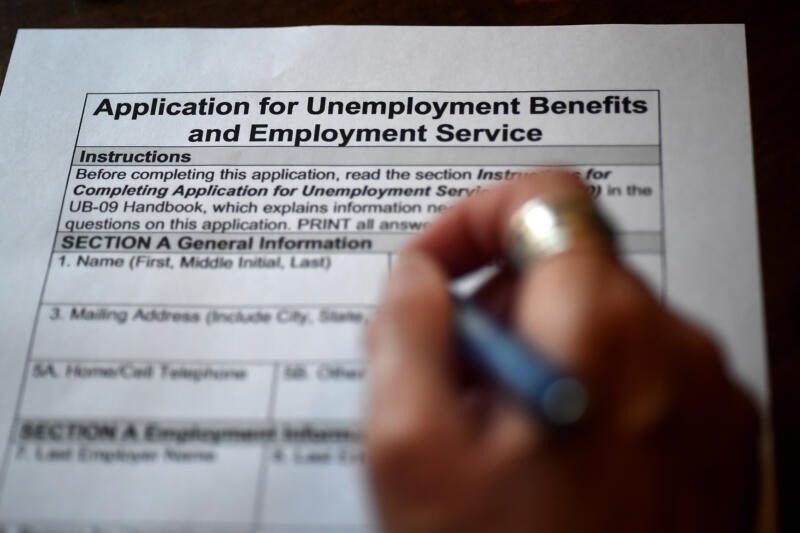US jobless claims begin decline, but still high at 3.2 mn
More workers filed for unemployment benefits last week than in the worst four weeks of the global financial crisis in 2009 (Olivier DOULIERY)
Washington (AFP) – Unemployed US workers filed 3.2 million new claims for jobless benefits last week as the coronavirus pandemic continued to ravage the world’s largest economy, but there is evidence the tsunami of layoffs is ebbing.
The latest data from the Labor Department brings the number of claims filed since mid-March, when the coronavirus pandemic forced businesses to close their doors to stop the virus’s spread, to 33.5 million — a number unprecedented in modern times.
However, the total first-time filers in the week ended May 2 declined from the week prior, indicating the surge in unemployment that followed the pandemic’s arrival in the United States past its peak, though still troubling.
“Absolute numbers remain horrible/worrisome,” Mohamed El-Erian, chief economic advisor at Allianz, wrote on Twitter, but he noted that the pace of the job losses is “moderating.”
The US is home to the world’s largest and deadliest coronavirus outbreak, with 73,095 fatalities and 1,227,430 cases reported as of Wednesday, according to Johns Hopkins University.
The weekly jobless claims figures have offered a real-time window into the economic damage wrought by the pandemic, and many analysts believe the US is already in a deep recession.
More of the picture will be revealed Friday when the Labor Department releases unemployment data for April — the first report to cover the weeks when the lockdowns were in full force.
The monthly report is expected to show job losses of more than 20 million — and some economists say it could be closer to 30 million — and the unemployment rate skyrocketing to perhaps 20 percent, a drastic change from its historic low level of 3.5 percent in February, before the virus arrived.
– The curve flattens –
The latest weekly data showed a decrease in new unemployment claims from the week ended April 25, when 3.8 million workers filed.
That may indicate the initial surge in layoffs is starting to retreat, but the number still remains incredibly high — well above even the worst four weeks of the global financial crisis and more comparable to unemployment levels seen during the Great Depression 90 years ago.
Ian Shepherdson of Pantheon Macroeconomics predicted new weekly filings dipping below one million by the second or third week of June.
“Claims continue to decay by about 15 to 18 percent per-week, and are now at less than half the 6.9 million peak in the week of March 28,” he said in an analysis.
US President Donald Trump has said he views reopening the economy as a priority, and some states have announced their own plans to do so, which could push further hiring in June, Shepherdson said.
– Worrying signs –
Other surveys released on Thursday also showed worrying signs of the country’s economic distress, fueling speculation that the US is facing a long and painful recovery from the coronavirus downturn.
Labor productivity in the first quarter of 2020 — only a few weeks of which parts of the country spent under lockdown orders — fell 2.5 percent compared to the fourth quarter of 2019, the result of a 6.2 percent plunge in production and a 3.8 percent drop in the number of hours worked.
“Hopes of a sustained productivity revival are being dashed,” Oxford Economics wrote in an analysis. “Going forward, the trend in productivity growth will likely settle at a very subdued pace as firms remain reluctant to invest due to still-hesitant demand, financial pressure and lingering uncertainty.”
Global outplacement firm Challenger, Gray & Christmas, Inc. said job cuts by US-based employers spiked in April to 671,129, the highest number recorded since they began keeping track in January 1993, with the vast majority attributed to the coronavirus pandemic.
“The indefinite nature of this pandemic coupled with the fact that we’re seeing recession- or even depression-level economic data means the vast majority of these jobs will not return any time soon,” the firm’s senior vice president Andrew Challenger said.
Disclaimer: Validity of the above story is for 7 Days from original date of publishing. Source: AFP.


